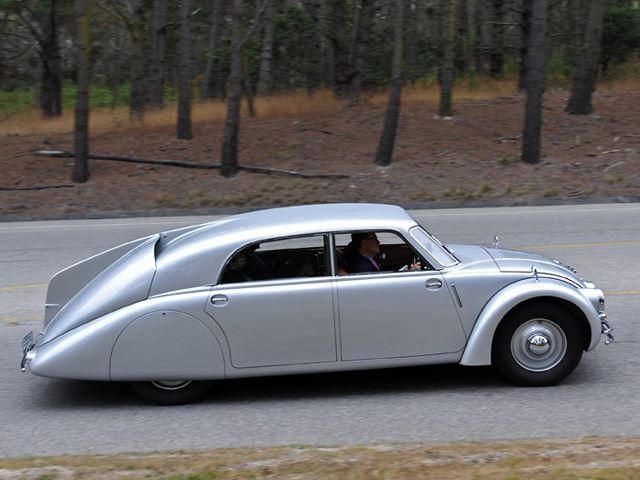
Ask any good surfer or snowboarder, the key to becoming good at each sport isn't to conquer water in its liquid or solid forms but to learn its characteristics and then manipulate them to stay stable and gnarly. The same principal applies to cars, because even though a car (hopefully) isn't sliding on snow or water while driving, it does glide through the air. However no one was thinking about this in the late 1800's and early 1900's, when the first cars were being built.
People were still marveling at the fact that a wheeled object could travel on land without being strapped to large animals. In addition, fluid dynamics were a new concept that was beginning to be applied to planes, trains, and boats. Like many new designs, the first cars took after the object from which they evolved, the carriage. Early automotive engineers soon realized that the design of a carriage became obsolete as soon as an internal combustion engine was put inside, not because of the obvious size and mass, but because of the new speeds afforded by the extra power. While a horse drawn carriage was able to travel around 5-8 miles per hour, the Ford Model T was able to whiz past at a blistering 40 mph.
It wasn't long before cars had infiltrated city streets, leaving no option but to build paved roads and highways. The newfound freedom of the open road pushed automakers to experiment with solutions to make cars go faster. This combined with the realization that cars did not have to resemble carriages is what started a mad rush to remake the car. Aeronautics experts left their fields and began to pen new car designs to increase top speeds. New and more powerful engines, better drivetrains, and beautiful designs were unveiled left and right, and among these additions to the car was the teardrop design. This made cars slip through the air with much less resistance than the typical box design car of the 20's.
One of the most notable aerodynamic champions of the time was the Chrysler Airflow, a car with aerodynamics design that was well ahead of its time. On the other side of the pond was the Czech-built Tatra, which became the genetic ancestor of the Volkswagen Beetle and the Porsche 911. By 1934, Tatra's T77 had evolved to become one of the most slippery cars in history, and remained so until 1995 when GM released the EV-1. It turns out that the T77 killed more Nazi Officers than the World War II battlefield. This was because the slick lines and large tail fin gave the car the ability to reach 100 mph while the rear mounted V8 meant that taking turns at speed induced lethal amounts of oversteer.
These cars were drastic steps forward in the evolution of the car, but as the world began to ramp up for World War II, technological innovation became allotted to killing machines, putting the development and advancement of automotive aerodynamics on hold.

